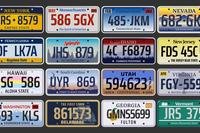For whatever reason, certain misconceptions abound when it comes to car insurance — whether it's the perception that you're covered for every single mishap that occurs or that there's a "best" time of year to buy coverage. Read up on these eight debunked car insurance myths so you can better manage your auto policy, and potentially save some cash while you're at it.
1. Red cars cost more to insure.
While the year, make and model of your car typically contribute to your insurance premium, insurers don't take into account what color you decide to drive. This myth likely originated from the idea that police officers are more likely to dole out tickets to motorists in vermillion vehicles — but this is also a myth. So if you're set on owning a red car, don’t worry: insurance companies won't stand in your way.
2. "Full coverage" covers everything.
Simply put, there's actually no such thing as "full coverage." This term is often used to refer to the combination of comprehensive and collision coverages, which do, indeed, cover a lot of hazards. But they certainly don't cover everything, regardless of who you're insured with.
Comprehensive and collision coverages are technically optional, unless you're leasing or financing a car, in which case you're likely required to carry them as a part of your loan or lease. You can count on these coverages to protect you against things like collisions with animals, natural disasters, glass damage, theft and vandalism, fire, and damage to your own car resulting from accidents you cause.
On the other hand, comprehensive coverage doesn't step in for any personal belongings that got stolen along with your vehicle, for example. Standard car insurance also doesn't cover you for any damage to your car that was incurred while using it for business purposes, like delivering pizzas, say. It's important to read your specific policy and/or speak with a licensed agent so you can be sure of everything you are (and aren't) covered for.
3. Car insurance follows the driver.
Let's say you lend your car to a friend or family member for a brief period. Keep in mind that you're lending out not only your car, but your car insurance as well. Your policy generally covers anyone whom you allow to drive your vehicle (unless you've specifically excluded them in writing with your insurer).
That's certainly good news, but it also means that even if your friend or family member has the highest-possible coverage limits and the lowest deductibles available, your coverages, limits, and deductible limits apply while they're driving your vehicle. So if you carry the bare minimum allowed in your state, you could be left responsible for your friend or family member's damages if the amount exceeds your auto insurance limits.
It's also worth mentioning that if you lend your vehicle to someone and they get in a wreck, you could personally be held liable for negligence if it's determined that you shouldn't have entrusted them with your car in the first place — like if you knew they were impaired, say.
4. New cars are always more expensive to insure.
You might be surprised to find that the make and model of your vehicle can sometimes matter more to insurers than the year it was issued. If you're driving a brand new, super-safe minivan or family sedan, you could pay less for auto insurance than a person driving an older sports car. Safety features are a huge contributing factor to your premium, and since newer cars are replete with safety devices (like antilock brakes and side airbags) that now come standard, this can significantly drive down rates.
However, newer cars have more technology built into them, making replacement and repair costs expensive. But the cost to repair older cars can be high too, since specific automotive parts become harder to find as models become obsolete. This makes the cost of repairs, and in turn, the cost to insure your vehicle, higher.
5. A short lapse in car insurance coverage doesn't matter.
Whether your policy's been canceled recently because of missed payments, or you simply let your coverage lapse, it's imperative to secure coverage again as soon as you possibly can. Not only does a lapse of even a couple days negatively impact your rates the next time you get insurance, but you also risk being financially responsible for anything that happens to your vehicle while you're uninsured. The vast majority of states require active auto insurance for you to legally get behind the wheel — not to mention all the mishaps your insurance can cover even if your car's just sitting in the driveway.
6. Owning a home doesn't affect your car insurance.
First things first: most car insurance companies offer savings for homeowners, so that fact alone dispels this myth. But there are other important ways that being a homeowner impacts your auto policy too. If you're ever found liable for a crash that results in injuries and/or property damage to another driver, you're going to want high enough coverage limits to fully cover the other party's accident-related expenses.
If you don't carry high enough coverage limits (or you lack certain coverages altogether), you could be sued for the difference. And the chance of your assets being seized — like your house, for one — increases considerably if you don't have enough cash on hand to pony up. The risk simply isn't worth it. It's always a good idea to purchase as much auto insurance coverage as you can comfortably afford. Ask a licensed agent to help you customize your policy to best fit your needs.
7. Your credit score has no impact on your premium.
While insurers don't consider your actual credit score when determining how much you'll pay for auto insurance, they do factor in what's called a credit-based insurance score (unless you're in one of a few states that don't permit it). A credit-based insurance score is different from a credit score in that it doesn't incorporate your job or income history, your gender, or any of your other personal information.
And it's important to remember that an insurance score is only one of a handful of rating factors — your insurance history and driving record are arguably much more pertinent to your auto insurer.
8. There's a "best time of year" to purchase auto insurance.
If you don't currently have car insurance and are looking to get on the road, the best time to purchase it is right now. Building up your insurance history is one of the biggest and most positive contributors to how much you pay for insurance, so why not get started as soon as possible?
And since you're probably wondering — no, there isn't a "best month" or "best season" to purchase a car insurance policy. There may be a special time of year for getting the best deals on electronics or mattresses, but your auto insurance premium is completely unaffected by when you choose to buy.
Ready to shop for car insurance?
Compare rates and coverage with our auto insurance quote comparison tool.
About the author
Eric Madia is Vice President of Auto Product at Esurance, where he is responsible for designing the company’s auto product lines. Eric has 22 years of experience in the industry, focused primarily on the underwriting, pricing, and innovation of auto insurance products. You can follow him on twitter @Erictheactuary










